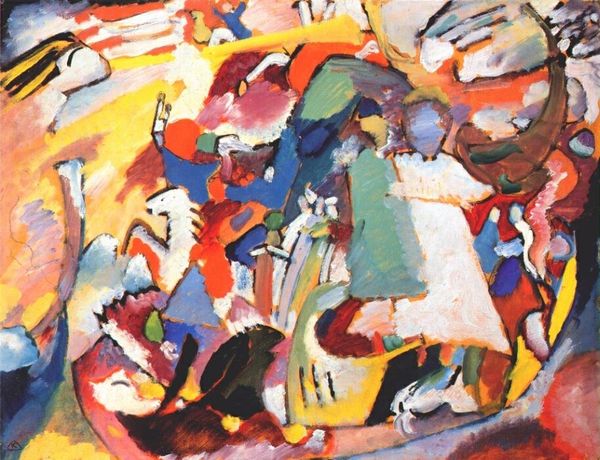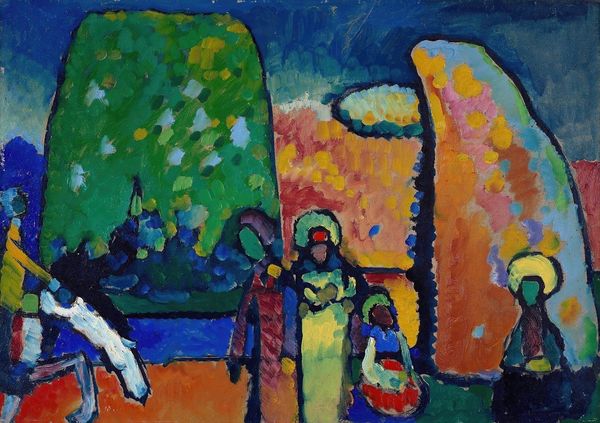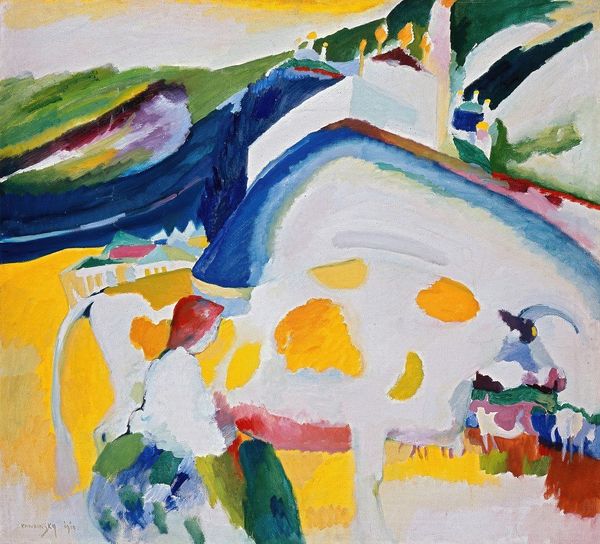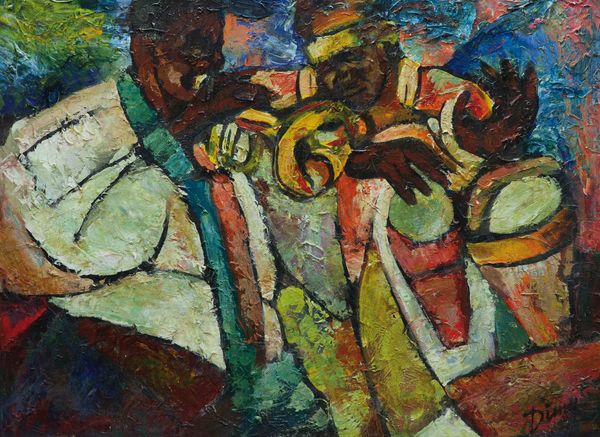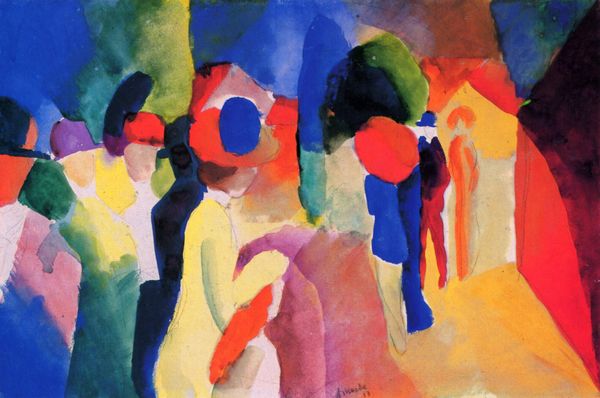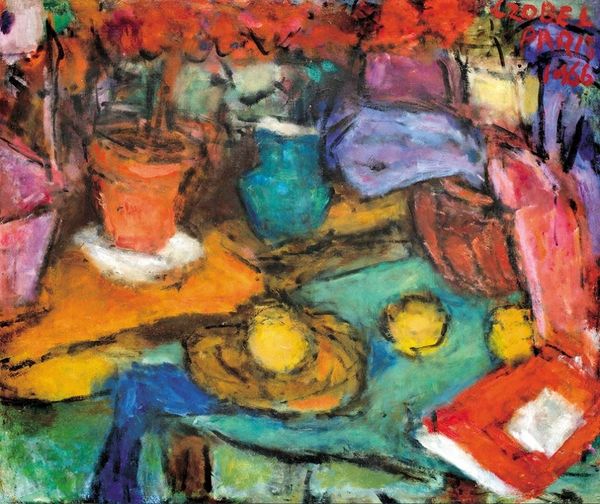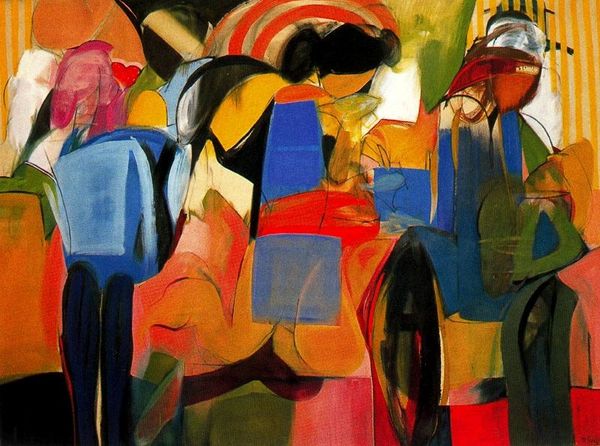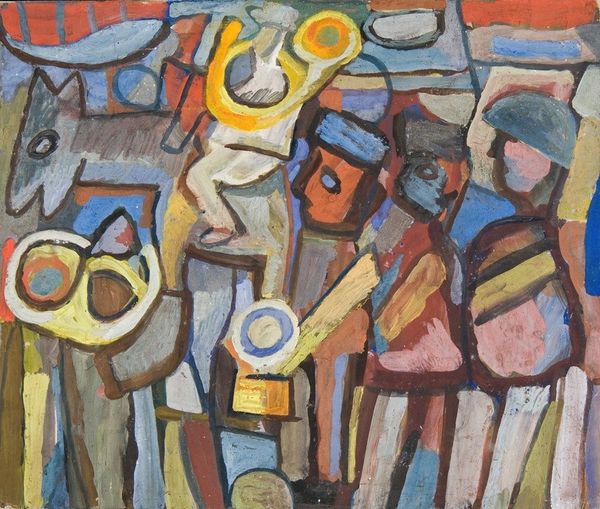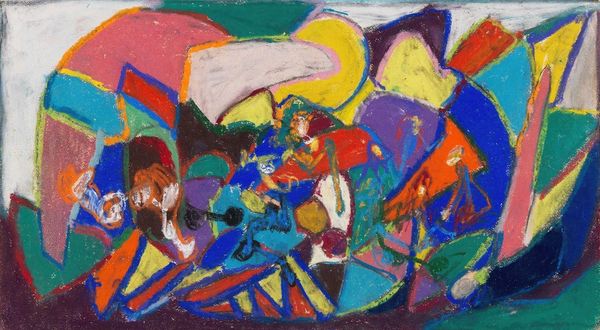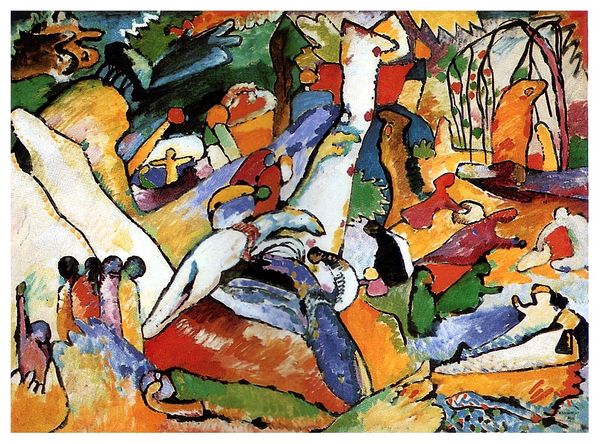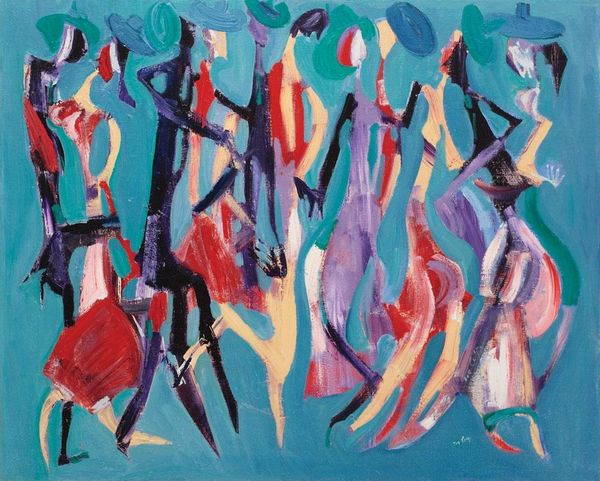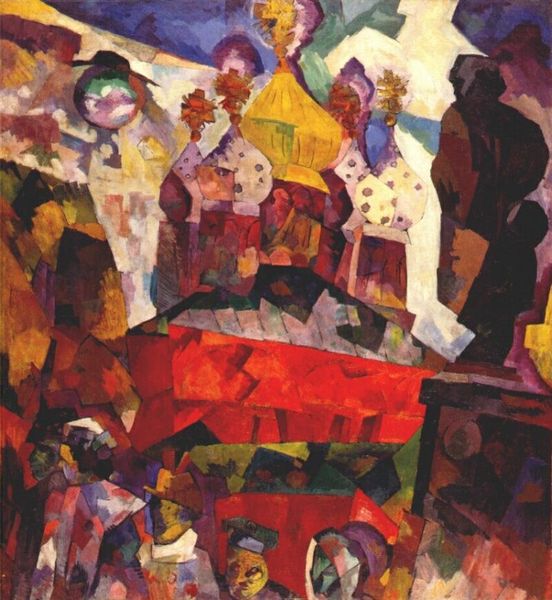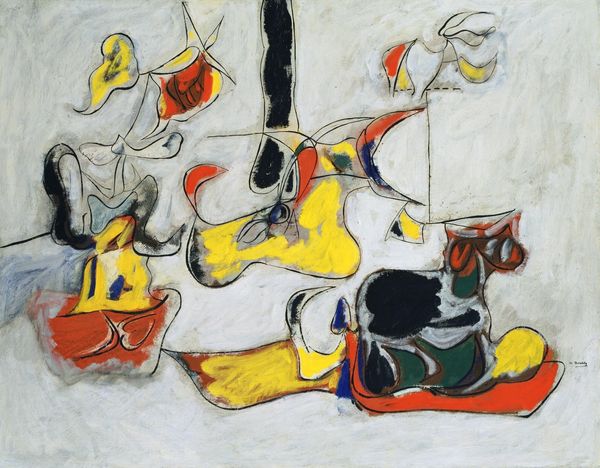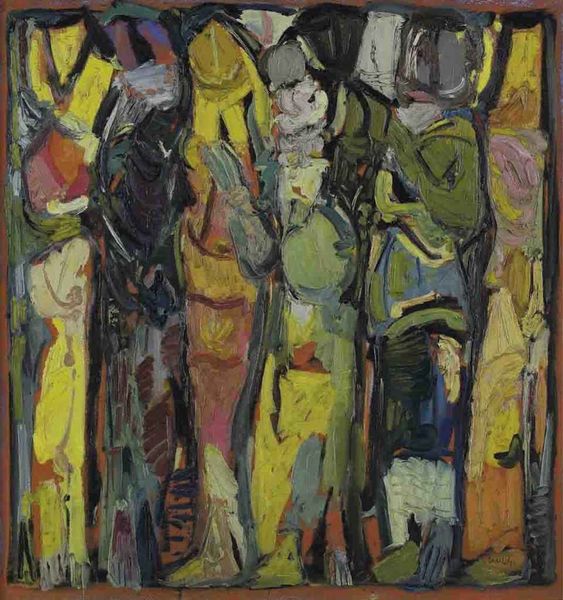
painting, oil-paint
#
art-nouveau
#
non-objective-art
#
painting
#
oil-paint
#
oil painting
#
geometric
#
expressionism
#
abstraction
Copyright: Public Domain: Artvee
Editor: Here we have Wassily Kandinsky's "Oriental," painted in 1909 using oil paint. It’s bursting with vibrant colors. At first glance, it feels almost chaotic, but I’m curious about how Kandinsky intended to use color and form to express an idea. What do you see in this piece? Curator: This piece speaks volumes about the socio-political climate of the early 20th century. Kandinsky was deeply interested in the spiritual in art, and "Oriental," even through its abstraction, can be seen as a rejection of Western materialism. The title itself positions the work within a colonial discourse, inviting viewers to consider the West's fascination with the "Orient." Consider, how might this abstraction be seen as a form of resistance against the representational norms imposed by the dominant culture? Editor: Resistance, interesting! I hadn’t considered it that way. I was focused on the purely aesthetic choice, how he moved away from concrete representation. Curator: Exactly, and that aesthetic choice isn't made in a vacuum. Abstraction becomes a powerful tool, especially at a time of increasing cultural exchange and conflict. The use of "Oriental" as a title is, I think, a conscious engagement with orientalism. Is he exoticizing or is he attempting to connect with something deeper, perhaps a rejection of Western rationality? Editor: So, the non-objective elements aren’t just about aesthetics, but about challenging established power structures through art. I see how that broader socio-historical lens completely shifts the meaning. Curator: Precisely! Think about the Fauvist movement happening at the same time, or even Gauguin's travels. Artists were actively seeking alternatives to Western artistic traditions. This painting becomes part of that larger conversation about cultural identity and artistic freedom. The power of art lies in its ability to challenge norms and inspire dialogue across different perspectives, after all. Editor: This has made me look beyond the surface level of color and shapes, understanding that art can act as social commentary. I will never be able to look at a work the same way again. Curator: And that’s precisely the point. By interrogating the contexts and power dynamics inherent in art, we can foster a more inclusive and critical understanding of our world.
Comments
No comments
Be the first to comment and join the conversation on the ultimate creative platform.
